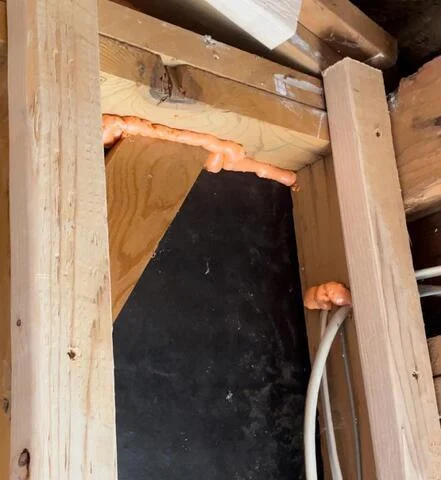Is Your Whole House Fan Making You Sick? The Hidden Dark Side of Whole House Fans
We’ve seen a massive influx in whole house fan customers in our business. As PG&E has now increased energy costs yet again, they’re becoming a more popular option for keeping your home cool. Whole house fans work by pulling cooler outdoor air into the home and pushing hot indoor air out through attic vents. While they are a more energy-efficient and economically friendly alternative to running your air conditioner, they also have a hidden downside. If a home is not properly air-sealed, these fans can contribute to increased dust levels, poor indoor air quality, and even illness.
In case you are thinking of getting one, consider the consequences of doing so if your home is not properly air-sealed.
And if you already have a whole house fan, try this experiment before continuing to read: turn on your whole house fan and hold a Kleenex over a light switch or a wall outlet and watch the air blow the Kleenex because of the air leakage! You can also wet your hand with water and easily feel the air blowing on your hand.
How Whole House Fans Work
Before delving into the potential risks of a whole house fan, it’s important to understand how they work. The fan is turned on with a couple windows opened a crack, and cooler outdoor air is pulled throughout the house. The hot air inside the home is then pushed into the attic and exhausted out roof vents.
Whole house fans are most efficient when a home is well-sealed and insulated. In homes that aren’t properly air-sealed, they can pull dust, debris, and contaminants from the attic and push them through holes, gaps, and cracks in the attic and into the home’s living spaces.

then exhaust the warmer air out the vents in the attic.
Increased Dust Levels
One of the most noticeable problems that arises from using a whole house fan in a poorly air-sealed home is the increase in dust. Many customers have told us that they believe that the dust was being blown into the home from the air pulled in from the whole house fan. However, the truth is that if your attic is not properly sealed or insulated, the fan’s suction forces dust, insulation particles, and debris from the attic through the air leakage points in the attic. This happens because whole house fans create negative air pressure inside the home (think of your home as a vacuum and the attic as the vacuum bag), which can cause dust from poorly sealed spaces to get pushed into the living areas.
Think of the years of dust and contaminants that exist in your attic. This is what is forced into your home when you run your whole house fan with an unsealed attic. The dust and pollutants can also be drawn from wall cavities or crawl spaces.

whose attic was not yet air-sealed.
Poor Indoor Air Quality
While having to sweep and dust more frequently is bothersome, it’s just a symptom of the more serious issue of poor indoor air quality. If your whole house fan is pulling attic air into your home, it can contain chemicals, fiberglass particles, and rodent-contaminated materials.
Occupants who have allergies, allergies, or other respiratory issues may complain of worsening symptoms when you run the fan and attribute it to polluted outdoor air. But the truth is, “the call is coming from inside the house!” Research shows that outdoor air, even in big cities with polluted air, is still less polluted than indoor air, which is often filled with contaminants from your attic, pet dander, viruses, and even particles in the air from cooking.
The Importance of Air-Sealing
We’re not saying to throw away your whole house fan remote and never use it again! Fortunately, the problems mentioned above can be mitigated with proper air-sealing and insulation. Air-sealing involves closing holes, gaps, and cracks in your home’s structure that allow air to flow between your attic and your home’s living spaces. By eliminating the points where air can be forced into the living spaces of your home, it forces that air to instead be exhausted out through the vents in your attic.
During our attic restoration process, we meticulously air-seal potential leakage points using closed-cell foam to prevent this airflow. This includes top plates, around registers and recessed lights, and plumbing and wiring penetrations.

air to flow between your attic and your home’s living spaces
You can always DIY air-sealing in your home, but remember: the vast majority of the leakage points live underneath whatever insulation you have in your attic. Unless you remove the insulation first, you won’t be able to identify these leakage points and seal them.
Whole house fans are an amazing way to cool your home and slash your AC costs. But without proper air-sealing, the benefits may be overshadowed by the hidden downsides of increased dust, poor indoor air quality, and symptom of illness.
Before you make any decisions, download your free Healthy Home Toolkit. The first step to improving your home is to really understand how your ghome works and controls your health and comfort.

